Squid ink pasta was never supposed to be just a dinner. It’s a ritual, a nod to the ocean’s silent majesty, with a flavor that’s both primal and refined. I love the way the ink transforms simple ingredients into something shadowy and striking, like a secret kept at the bottom of the sea.
Why I keep coming back to squid ink pasta
It’s a dish that feels both rebellious and elegant, a reminder of the ocean’s depth. The flavor is complex but straightforward, a little mysterious, a little familiar. Every bite is a small act of defiance against the ordinary, a celebration of the sea’s shadowed beauty.
Unpacking the ink: ingredients and their roles
- Squid ink: Gives the pasta its signature color and a briny, oceanic flavor. Use fresh or jarred, but avoid synthetic ink.
- Pasta: Opt for thick, hearty strands like mafaldine or bucatini to hold the ink and sauce well.
- Olive oil: A good splash helps develop flavor and keeps the sauce from sticking.
- Garlic: Adds aromatic depth, balancing the ink’s saltiness with a subtle sweetness.
- Lemon zest (optional): Brightens the dish with a fresh, citrusy zing that cuts through the richness.
Tools of the trade for ink-stained perfection
- Large pot: Boils the pasta and infuses the ink into the water.
- Wide skillet: Creates a space for sauce development and tossing pasta.
- Tongs: Helps toss and serve the pasta without breaking it.
- Ladle: Measures and adds pasta water or sauce liquids.
Mastering the art of squid ink pasta in simple steps
Step 1: Start by bringing a large pot of water to a rolling boil. Salt generously — it should taste like the sea.
Step 2: Add the squid ink to the water, stirring well to evenly distribute. Watch for the ink to turn the water a deep, inky black.
Step 3: Cook the pasta according to package instructions, usually about 9-11 minutes. Stir occasionally to prevent sticking.
Step 4: While pasta cooks, heat olive oil in a wide pan over medium heat (around 160°C/320°F).
Cues from the kitchen: How to tell your pasta is perfect
- The pasta should be al dente — firm to the bite but not hard.
- The ink water should be deeply black and fragrant, not burnt or bitter.
- Your sauce should coat the pasta smoothly, without clumping or excess oil.
Troubleshooting squid ink pasta mishaps
- Ink water smells burnt or bitter.? Reduce heat if ink water turns bitter.
- Pasta sticking together or to the bottom.? Stir more frequently to prevent sticking.
- Sauce clumping or drying out.? Add more pasta water if sauce is too thick.
- Overcooked, mushy pasta.? Cook pasta a minute less if it’s too soft.
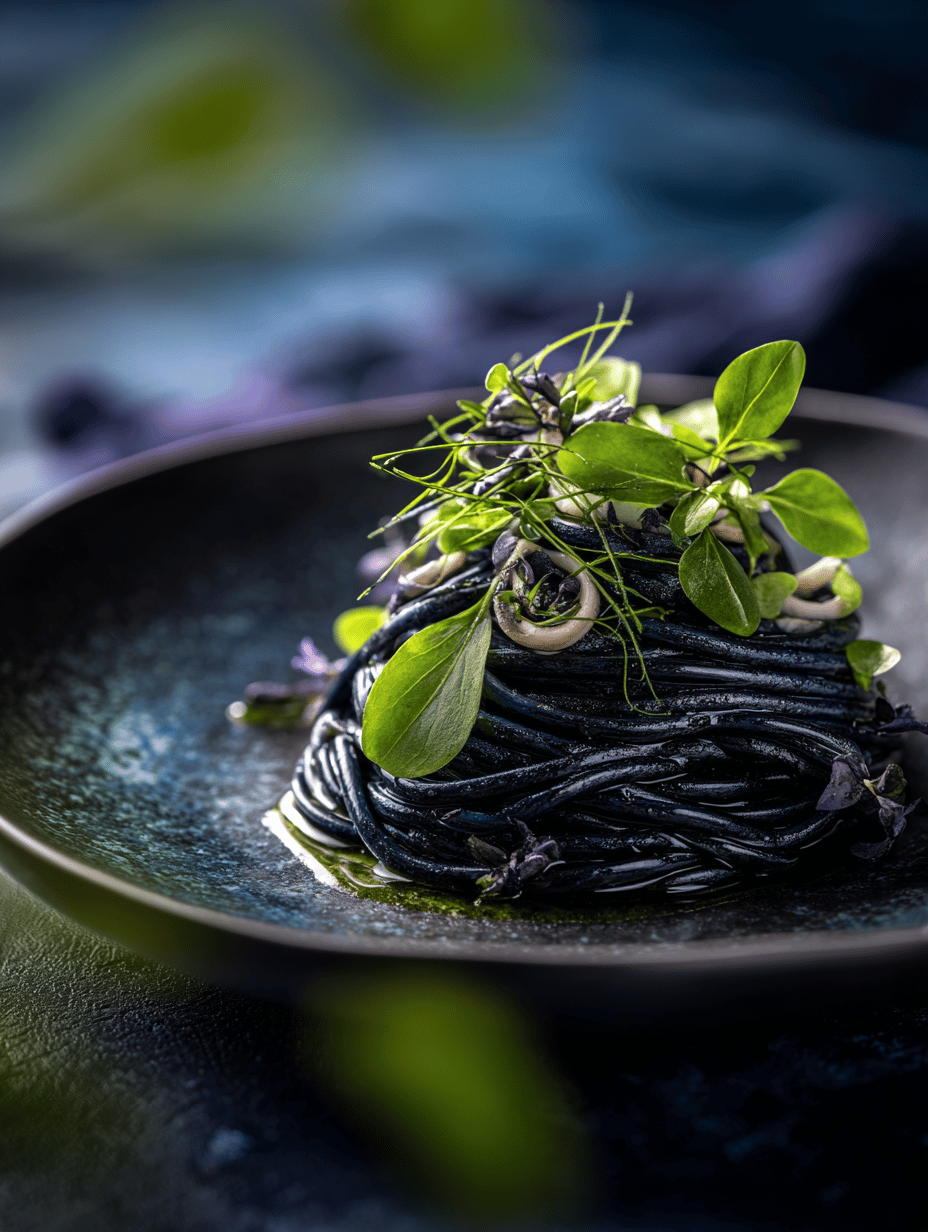
Squid Ink Pasta
Ingredients
Equipment
Method
- Bring a large pot of water to a rolling boil, then generously salt it until it tastes like seawater.
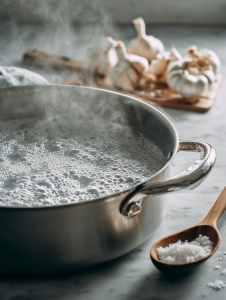
- Add the squid ink to the boiling water, stirring vigorously to distribute evenly. Watch as the water transforms into a deep, inky black.
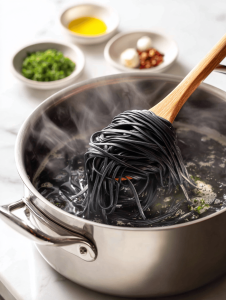
- Carefully add the pasta to the ink-infused water, stirring immediately to prevent sticking and ensure even coloring.
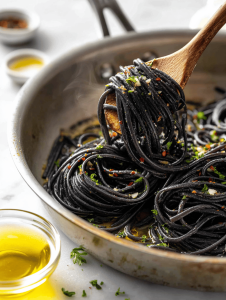
- Cook the pasta according to package instructions, usually 9-11 minutes, stirring occasionally. The water will stay dark and fragrant as the pasta absorbs the ink.
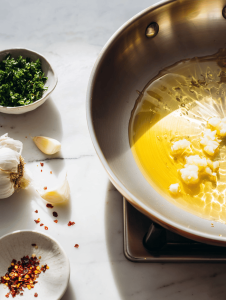
- While the pasta cooks, heat the olive oil in a wide skillet over medium heat, listening for a gentle sizzle as it warms.
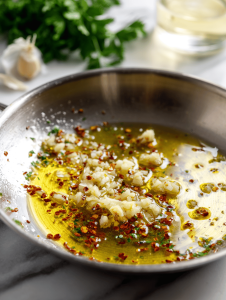
- Add the minced garlic to the skillet, cooking for about 30 seconds until fragrant and slightly golden, filling the air with a savory aroma.
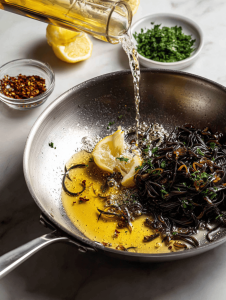
- Once the pasta is al dente, use tongs to transfer it directly from the ink water into the skillet, allowing some cooking water to come along to help loosen the sauce.
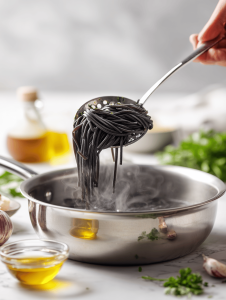
- Toss the pasta in the garlic and oil mixture, stirring gently to coat each strand evenly and create a glossy, flavorful surface.
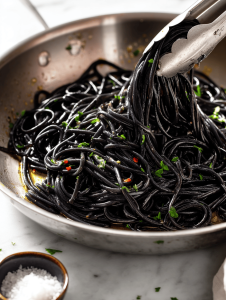
- If the sauce seems too thick, add a splash of reserved pasta water to loosen it and help it cling better to the noodles.
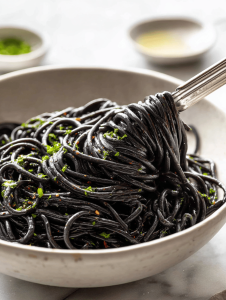
- Finish by sprinkling lemon zest over the pasta for a burst of citrus brightness, balancing the salty, oceanic flavors.
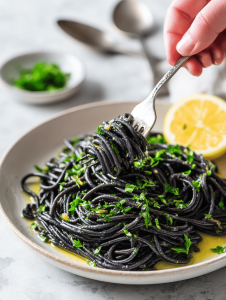
- Serve the squid ink pasta immediately, garnished with extra lemon zest if desired, and enjoy its striking appearance and complex flavor.
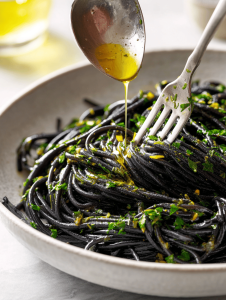
Leave a Reply